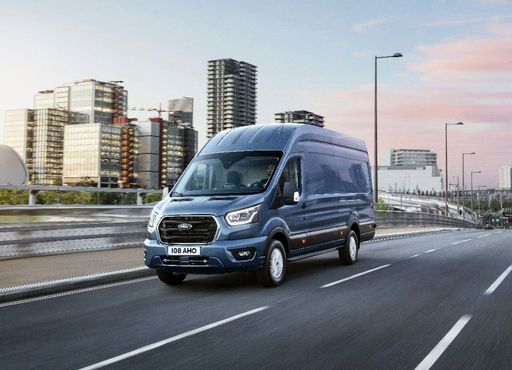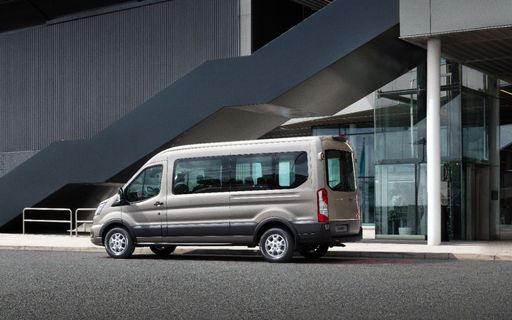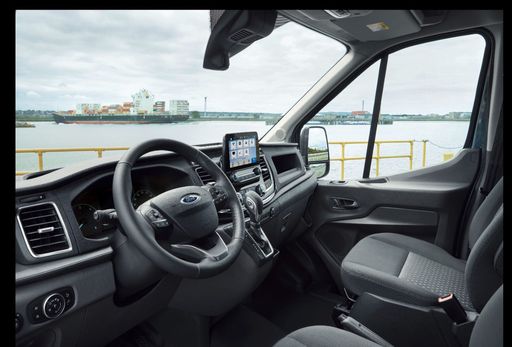Peugeot Partner VS Ford Transit Connect – Specs, Efficiency & Price Comparison
Which model is the better choice – the Peugeot Partner or the Ford Transit Connect? We compare performance (136 HP vs 150 HP), boot capacity (1800 L vs ), efficiency (17.40 kWh5.20 L vs ), and of course, the price (20500 £ vs 26200 £).
Find out now which car fits your needs better!
The Peugeot Partner (Cargo Van) is powered by a Electric, Diesel or Petrol engine and comes with a Automatic or Manuel transmission. In comparison, the Ford Transit Connect (Cargo Van) features a Diesel or Plugin Hybrid engine and a Manuel or Automatic gearbox.
When it comes to boot capacity, the Peugeot Partner offers 1800 L, while the Ford Transit Connect provides – depending on what matters most to you. If you’re looking for more power, you’ll need to decide whether the 136 HP of the Peugeot Partner or the 150 HP of the Ford Transit Connect suits your needs better.
There are also differences in efficiency: 17.40 kWh5.20 L vs . In terms of price, the Peugeot Partner starts at 20500 £, while the Ford Transit Connect is available from 26200 £.
Compare all the key specs now and find out which model fits your lifestyle best!
In the bustling world of compact vans, the Ford Transit Connect and the Peugeot Partner stand out for their practicality and efficiency. The Ford Transit Connect boasts a robust engine and versatile cargo configurations, making it a favorite for business owners needing reliable load transport. On the other hand, the Peugeot Partner impresses with its sophisticated interior and advanced technology options, offering a more refined driving experience for those who value comfort alongside functionality.
Peugeot Partner
The Peugeot Partner is a versatile and practical vehicle, ideal for both urban and rural settings. Its spacious interior and adaptable seating make it a popular choice for families and businesses alike. With a focus on reliability and efficiency, the Partner is well-suited to meet the demands of everyday transport.
detailsFord Transit Connect
The Ford Transit Connect is a versatile compact van that seamlessly combines functionality with a comfortable driving experience. Its spacious interior is designed to accommodate both passengers and cargo, making it an ideal choice for small businesses and active families alike. With its efficient engine and agile handling, the Transit Connect offers a reliable and economical option for urban and suburban driving.
details @ media.ford.com
@ media.ford.com
 @ media.ford.com
@ media.ford.com
 @ media.ford.com
@ media.ford.com
Ford Transit Connect vs. Peugeot Socio: The Battle of the Cargo Vans
In the rapidly evolving world of utility vehicles, two stalwarts stand out for offering versatility and innovation: the Ford Transit Connect and the Peugeot Socio. With the 2024 models, both manufacturers continue to push boundaries in terms of power, efficiency, and utility. This article delves into the specifics, comparing their technical specs and innovations to help you decide which van fits your needs better.
Engine and Powertrain Options
The Ford Transit Connect offers a diverse range of engine types, catering to varying needs. Buyers can choose between a diesel engine or a plug-in hybrid. The diesel variants range from 102 to 150 HP, providing sufficient power across different versions, while the plug-in hybrid offers a perfect blend of efficiency and performance.
On the other hand, the Peugeot Socio showcases its commitment to green technology with options in electric, diesel, and petrol engines. The electric version delivers an impressive 136 HP with an equivalent power output of 100 kW, and an electric range of 354 km, making it an ideal choice for eco-conscious drivers.
Transmission and Drive Type
Both vehicles offer front-wheel drive, promoting maneuverability and efficiency. The Transit Connect provides both manual and dual-clutch automatic transmissions, catering to drivers who prefer either. Conversely, the Socio includes manual and automatic gearbox options, along with a specialized reduction gearbox for electric models, further enhancing driving dynamics.
Performance and Efficiency
In terms of acceleration, the Ford Transit Connect varies between 11.4 and 13.5 seconds from 0 to 100 km/h, which is respectable for a cargo van. Top speed reaches up to 186 km/h, which is notable for the segment. Torque ranges from 280 to 350 Nm, offering robust pulling power.
The Socio offers similar acceleration capabilities, clocking 0 to 100 km/h times between 11.2 and 14.8 seconds. However, it distinguishes itself with its electric variant that provides 17.4 kWh/100km consumption, emphasizing efficiency. The highest speed achievable with petrol models is 184 km/h. Peugeot's torque options range from 205 to 300 Nm, ensuring competent performance under load.
Capacity and Space
Flexibility being a key factor, the Transit Connect can accommodate between 2 to 5 seats with a generous cargo capacity highlighted by its body length that ranges up to 4868 mm. Its fuel tank capacity stands at 50 liters, balancing long hauls and refueling stops.
The Socio outdoes its competitor in trunk space, boasting a trunk capacity of 1800 liters. Coupled with seating for up to 5 people and payloads reaching as high as 991 kg, this Peugeot van ensures you’re prepared for extensive cargo loads.
Conclusion: Choose What Fits Yours Needs
In summary, both the Ford Transit Connect and the Peugeot Socio cater to the evolving needs of the modern driver, supporting sustainability, performance, and practicality. The Transit Connect shines with its hybrid innovations and a breadth of diesel options, while the Socio stands out with its electric model's low emissions and substantial cargo capacity. Your choice will hinge on whether efficiency or traditional powertrain dynamics are more aligned with your operational demands. Regardless of your decision, both vans deliver robust solutions for today's transportation and commercial needs.

|
|
|
|
|
Costs and Consumption |
|
|---|---|
|
Price
20500 - 33800 £
|
Price
26200 - 41500 £
|
|
Consumption L/100km
5.2 - 6.3 L
|
Consumption L/100km
-
|
|
Consumption kWh/100km
17.40 kWh
|
Consumption kWh/100km
-
|
|
Electric Range
354 km
|
Electric Range
-
|
|
Battery Capacity
-
|
Battery Capacity
19.70 kWh
|
|
co2
0 - 143 g/km
|
co2
-
|
|
Fuel tank capacity
53 - 61 L
|
Fuel tank capacity
32 - 50 L
|
Dimensions and Body |
|
|---|---|
|
Body Type
Cargo Van
|
Body Type
Cargo Van
|
|
Seats
2 - 5
|
Seats
2 - 5
|
|
Doors
4 - 5
|
Doors
4
|
|
Curb weight
1329 - 1813 kg
|
Curb weight
-
|
|
Trunk capacity
1800 L
|
Trunk capacity
-
|
|
Length
4401 - 4751 mm
|
Length
4500 - 4868 mm
|
|
Width
1848 mm
|
Width
1855 mm
|
|
Height
1796 - 1812 mm
|
Height
1856 - 1860 mm
|
|
Payload
611 - 991 kg
|
Payload
-
|
Engine and Performance |
|
|---|---|
|
Engine Type
Electric, Diesel, Petrol
|
Engine Type
Diesel, Plugin Hybrid
|
|
Transmission
Automatic, Manuel
|
Transmission
Manuel, Automatic
|
|
Transmission Detail
Schaltgetriebe, Automatikgetriebe
|
Transmission Detail
Schaltgetriebe, Automat. Schaltgetriebe (Doppelkupplung)
|
|
Drive Type
Front-Wheel Drive
|
Drive Type
Front-Wheel Drive
|
|
Power HP
102 - 136 HP
|
Power HP
102 - 150 HP
|
|
Acceleration 0-100km/h
11.2 - 14.8 s
|
Acceleration 0-100km/h
11.4 - 13.5 s
|
|
Max Speed
135 - 184 km/h
|
Max Speed
175 - 186 km/h
|
|
Torque
205 - 300 Nm
|
Torque
280 - 350 Nm
|
|
Number of Cylinders
3 - 4
|
Number of Cylinders
4
|
|
Power kW
75 - 100 kW
|
Power kW
75 - 110 kW
|
|
Engine capacity
1199 - 1499 cm3
|
Engine capacity
1498 - 1968 cm3
|
General |
|
|---|---|
|
Model Year
2024
|
Model Year
2024
|
|
CO2 Efficiency Class
A, E
|
CO2 Efficiency Class
-
|
|
Brand
Peugeot
|
Brand
Ford
|
Peugeot Partner
Exploring the Peugeot Partner: A Blend of Versatility and Innovation
The Peugeot Partner has long been a staple in the world of light commercial vehicles, offering practicality and reliability. However, with the latest iterations, Peugeot has taken a bold step by integrating advanced technology and modern design to create a vehicle that's not just functional, but also efficient and environmentally friendly. Let's dive into the technical details and innovations that make the latest Peugeot Partner a standout choice in its class.
Efficient Powertrains: Diesel, Petrol, and Electric Choices
The 2024 Peugeot Partner provides a wide range of powertrains to suit different needs and preferences. Whether you're looking for the tried-and-tested efficiency of a diesel engine, the simplicity of petrol, or the future-ready appeal of electric, the Partner offers them all. With power outputs ranging from 102 to 136 PS and options for automatic and manual transmissions, it caters to those who desire flexibility in vehicle performance.
Embracing Electric: The E-Partner Revolution
One of the most notable features of the latest Peugeot Partner is the introduction of the e-Partner, an all-electric variant. This model comes equipped with a 50 kWh battery, providing a significant range of up to 354 km on a single charge, making it ideal for urban deliveries or longer commutes with no emissions. Its front-wheel-drive layout and electric motor deliver 136 PS, ensuring a lively yet smooth driving experience.
Room for More: Versatility and Cargo Space
Peugeot understands the importance of adaptability in commercial vehicles. The Partner offers up to 1,800 litres of cargo space, or the capacity to carry payloads ranging from 611 to 991 kg. Additionally, the choice of 4 to 5 doors and seating configurations from 2 to 5 seats ensures that the Partner can be customised to meet the specific needs of various business requirements.
Compact Yet Capable: Dimensions and Design
The Peugeot Partner showcases a clever balance of compact exterior dimensions and a spacious interior. With lengths between 4,401 mm and 4,751 mm, and a width of 1,848 mm, it delivers easy manoeuvrability in urban environments without compromising on cargo capacity. The height ranges from 1,796 mm to 1,812 mm, ensuring stability and on-road presence.
An Eye on Sustainability: CO2 Emissions and Efficiency
Peugeot's commitment to sustainability is evident in the Partner's diverse powertrain options and their associated CO2 emissions, which range from zero for the electric variant to a maximum of 143 g/km for certain internal combustion engine models. This variety allows businesses to choose based on their environmental goals as well as operational needs.
A Multi-Talented Performer: Performance and Practicality
With acceleration figures from 0-100 km/h in just 11.2 seconds for some models and a top speed of up to 184 km/h, the Partner is not just about practicality; it's also about performance. The available torque between 205 and 300 Nm contributes to confident driving dynamics whether navigating urban settings or cruising on the motorway.
Conclusion: The Partner of the Future
The Peugeot Partner continues to be a frontrunner in the small van segment, thanks to its innovative approach to design, fuel efficiency, and technological integration. By providing a range of powertrain options and configurations, the Partner meets the diverse needs of today's businesses while keeping an eye firmly on the future. Whether opting for the environmentally friendly e-Partner or the robust diesel variant, Peugeot has crafted a vehicle that truly earns the name "Partner".
Ford Transit Connect
The Versatile Ford Transit Connect: An In-Depth Overview
The Ford Transit Connect has long been a staple in the light commercial vehicle market. Renowned for its versatility, efficiency, and robust build, this model offers a variety of configurations to suit different business needs. In this article, we delve into the technical specifications and innovative features of the latest iteration of this ever-popular vehicle.
Powerful Engine Options and Performance
Under the bonnet, the Ford Transit Connect offers a range of powerful and efficient engines. The standard diesel options include the robust 2.0 EcoBlue Diesel engines, available with either manual or automatic transmissions. For those seeking a greener option, the Transit Connect also offers a 1.5 EcoBoost PHEV Plug-In Hybrid with a 150 PS output. This array of options ensures that drivers can choose a powertrain that best suits their performance requirements and environmental considerations.
Advanced Design and Dimensions
In terms of design, the Transit Connect is engineered for practicality without sacrificing aesthetics. Measuring between 4500 mm and 4868 mm in length, and 1855 mm in width, it is well-suited for urban environments while offering ample cargo space. The vehicle’s height spans from 1856 mm to 1860 mm, providing a spacious interior that is both comfortable and functional for drivers and passengers alike.
State-of-the-Art Features and Specifications
Technology and convenience feature prominently in the Transit Connect’s offerings. The latest model includes refined details and equipment lines like Limited, Trend, and the more feature-rich Active Automatik. Its advanced infotainment system, safety features, and driver assistance technologies work harmoniously to enhance both driving experience and passenger safety.
Additionally, the vehicle boasts a battery capacity of 19.7 kWh in the hybrid variant, enabling impressive electric-only ranges for day-to-day journeys. The inclusion of dual-clutch automatic transmission in certain models significantly enhances driving dynamism and reduces fuel consumption.
Fuel Economy and Driving Range
The Transit Connect impresses with its fuel economy, particularly in its hybrid iteration. With a fuel tank size of 50 litres and the efficiency of hybrid technology, the vehicle assures drivers of fewer stops at filling stations and more time spent on the road. Despite its commercial nature, it manages to achieve competitive emission figures, an important factor for eco-conscious businesses.
Versatility in Configuration
One of the standout features of the Ford Transit Connect is its adaptability. Available in different configurations, this model can accommodate between two and five passengers, making it suitable for both cargo transport and passenger services. Its flexibility extends to the range of available options for customisation, ensuring it can be configured for various business and personal needs.
Conclusion
The Ford Transit Connect continues to lead the market with its blend of robust performance, innovative features, and adaptability. Whether used for urban delivery, passenger transport, or any number of other commercial applications, the Transit Connect fulfills its role effectively, embodying Ford’s commitment to quality and performance.
With its combination of traditional internal combustion and hybrid powertrains, the Transit Connect addresses both modern environmental concerns and longstanding demand for reliable utility workhorses, making it a noteworthy option for businesses and families alike.
The prices and data displayed are estimates based on German list prices and may vary by country. This information is not legally binding.
